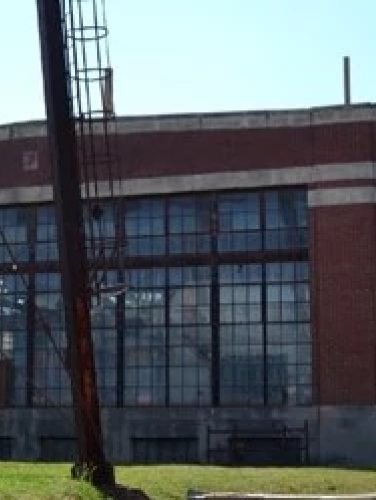
Ford Motor Company Assembly Plant
(ca. 1945)
Once Ford’s largest plant in the Southeast, the Ford Motor Company Assembly Plant remained in operation for less than ten years.
1774 Statesville Ave., Charlotte, NC 28206
In the early 1920s, the Ford Motor Company chose Charlotte as the site for one of its newest manufacturing facilities due to the city’s successful economy, ease of access to railroad lines, and impressive local sales record of Ford vehicles. The Ford Motor Company Assembly Plant was once Ford’s largest plant in the Southeast but closed after less than a decade of operations.
Property Quick Links
Henry Ford (1863-1947), founder of the Ford Motor Company, did not invent the automobile. Instead, his success was based upon his talent as innovator. His company made automobiles affordable for middle-class Americans. The Michigan native began repairing and constructing automobile engines in the late 1800s. Ford built his first horseless carriage in 1896 – a self-propelled four-wheel vehicle called a quadricycle – but he was unable to turn his creation into a business. By 1903, he finally secured enough investors to incorporate his company. Starting with what he dubbed the Model A car, Ford progressively improved each iteration of his automobile. His 1907 Model N car became the bestselling vehicle in America, but it was his affordable, reliable, and accessible 1908 Model T car that keyed his success with the sale of some fifteen million cars.
Ford also innovated how the automobile was manufactured. His 1913 conception of the moving assembly line revolutionized the business, reducing assembly time and increasing output. The process required mechanized conveyor belts to push each car along as it was assembled by individual workers, each of whom added one part or made one adjustment to contribute to the final product. An entire car could be built in ninety minutes, far quicker than the twelve hours required when using the standard non-moving assembly line. But the moving assembly line needed a custom-made building with large stretches of uninterrupted space to fit its necessarily long conveyor belts. Ford turned to Albert Kahn (1869-1942), a preeminent twentieth-century industrial architect, to design a modern, well-lit industrial space for the company. The enhanced structural support afforded by Kahn’s unique Reinforced Concrete construction system, with its special concrete and steel bar beams and concrete-filled floor joists, minimized the need for interior support posts, allowing for long spans of uninterrupted workspace to accommodate the long conveyor belts. Kahn also used sawtooth roofs with skylights resembling shark fins to provide enhanced lighting of the workspace without the need for large window openings that compromised wall support.
The Ford Motor Company moved quickly to capitalize on the initial success of the Model T, aggressively seeking to expand the company’s manufacturing capacity with twenty new assembly plants, including Charlotte’s Statesville Avenue plant. At more than 200,000 square feet of workspace on nine acres, Charlotte’s Ford plant employed some 800 to 1,000 workers with an estimated daily production capacity of 400 cars. But declining sales, lagging innovation, and increasing competition from other manufacturers combined with the 1929 stock market crash to prompt closure of the plant by 1932. The building sat empty for nearly ten years before the U.S. Army purchased the property, converting it into one of nine quartermaster depots to serve the American military during the World War II era.

